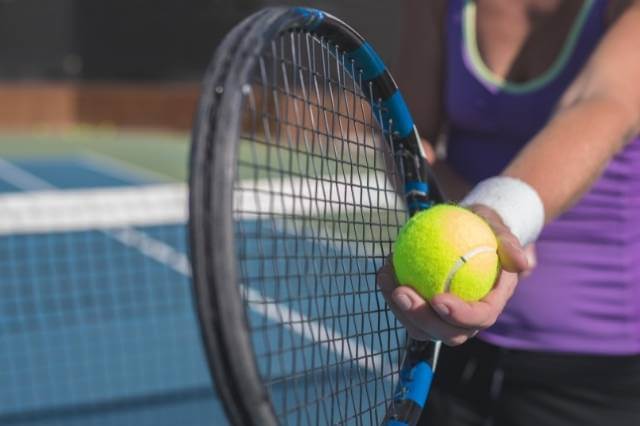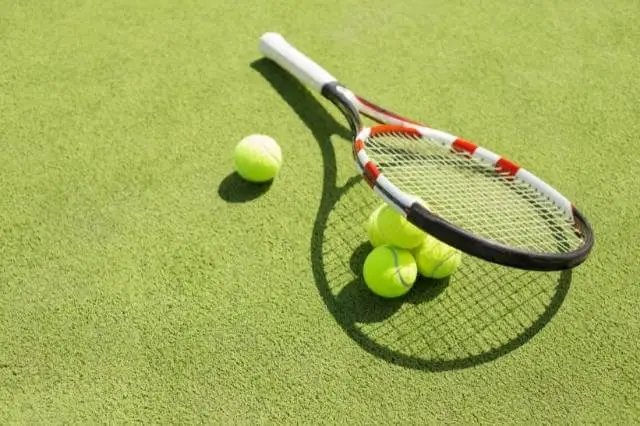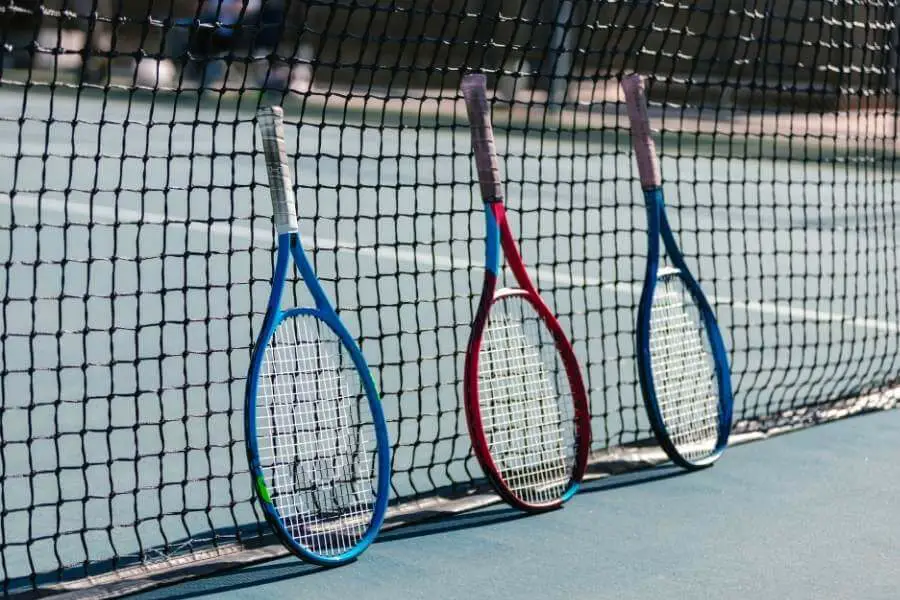The most crucial piece of gear you’ll need to play tennis is a racket, and the question I’m frequently asked about them is if it makes sense to spend more money on a racket than one that costs $30.
This article will help you learn more about it.
Table of Contents
Do You Need an Expensive Tennis Racket?
The short answer is a huge no.
You don’t need those pricey racquets since, more often than not, they are just simple money-grabbing schemes.
And regardless of how many fantastic reviews a racquet receives, you can usually acquire the same racquet with a little tweaking.

What Is The Price Of A Tennis Racket?
The majority of tennis racket costs in the USA will fall between $15 and $300.
Depending on their passion for the most recent design, a skilled club player may anticipate paying anywhere between $150 and $250.
To get a premium racket at a competitive price, a savvy player may search for special discounts on models that initially debuted a year or two ago.
The type of complex technology that Nadal or Zverev could require is wholly superfluous for a novice.
To teach a player the fundamentals of the game, a simple graphite or even aluminum frame with nylon string will be more than enough.
If they remain eager and continue to advance after a few months, they will likely be prepared for something more expensive.
Although there are several pretty respectable alternatives around $20–30, no novice should have to spend more than $100 on their first racket.
The little rackets that very young kids use to strike low compression balls don’t need to be made out of pricey materials.
For $15–20, a basic metal racquet will do the trick.
This presumably holds true equally as they develop and transition across the racket length range of 19 to 23 inches.

Do Expensive Rackets Pay Off?
The answer to this issue relies on your priorities, just like it does with everything else.
If you play tennis professionally, you’ll probably hope that the most costly, cutting-edge rackets will provide you with the performance advantage that will make a difference to your career.
The top players won’t care about pricing because their sponsors will provide them with rackets in any case.
For club players, purchasing pricey rackets is beneficial for the gratification it provides them if they are rich and enjoy the concept of utilizing the newest equipment.
Anyone else should be able to locate a mid-priced weapon that works for them by researching the playing qualities of rackets and testing them out.
In the ‘clearance’ area of several tennis websites, as previously said, it is more than possible to get rackets that were in style one or two years ago for between $100 and $180, offering high-quality gear at an affordable price.
Expensive rackets are unquestionably not worth the additional expense for players on a tight budget.
In general, the better materials, frame design, string job, weight balance, and overall performance a tennis racket has, the more costly it is.
A more pricey tennis racket is undoubtedly worthwhile if you pursue tennis seriously.
Nevertheless, if you believe you play enough to reap the benefits, it might be wise to spend extra money on a racket.
You haven’t figured out exactly what distinguishes more costly rackets from less expensive ones, though.
I’ll go through each element in detail so you can comprehend the topic better.
Materials
The material is one of the key distinctions between inexpensive and costly tennis rackets, thus it is definitely worthwhile to spend more money on the best materials, such as titanium, graphite, or carbon fiber.
These materials provide the ideal feel for tennis since they are lightweight but incredibly strong and resilient.
Additionally, they will effectively absorb the racket’s vibrations.
The inexpensive rackets, on the other hand, are frequently constructed of aluminum or metal alloys, which are mixtures of several metals.
The playing experience is poorer since rackets manufactured of these inferior materials aren’t as robust and are good at absorbing vibrations.
So, if you want a high-quality racket, make sure it is constructed of titanium, graphite, or carbon fiber.
Expect a higher premium, but it will be worthwhile in the end.

Type of Player
Tennis rackets are sometimes divided into two categories: competition rackets and beginner & leisure rackets.
As you may expect, competitive rackets are more expensive than those for beginners and recreational play.
This is due to the fact that everything in pro rackets—from the materials to the string work and everything in between—is superior.
Recreational and novice rackets frequently range in price from $30 to $100, while professional-level rackets typically cost over $100 and exceed $200.
String Job
Considering that only the strings make touch with the tennis ball, they are without a doubt among the most crucial components of the entire racket.
What are the distinctions between strings then?
In contrast to inexpensive rackets, which often have synthetic strings, excellent rackets frequently feature polyester or genuine gut strings.
If you purchase a less expensive racket, you can always remove the stock strings and replace them with your favorite ones.
The truth is that strings will begin to lose tension as soon as the racket is strung, so ensuring sure they are of high quality and strung properly will pay off in the long run.
Last but not least, it’s a good rule of thumb to restring your racket as many times a year as you play tennis each week.
If you play tennis twice a week, for instance, you should restring your racket twice a year.
Frame
The frame is the next obvious difference between inexpensive and costly rackets.
One-piece and two-piece frames are the two types of frames available.
Because they can impart greater force to the ball, one-piece frames are much better than two-piece ones.
Consider the fact that a frame made of only one piece will be far better able to manage vibrations than one composed of two, and that the vibrations won’t be conveyed through the racket as efficiently.
If you’re unsure if the racket’s frame is one or two pieces, you may quickly determine by inspecting the bridge above the frame’s neck to check if it’s a single piece or is attached to another component.
Always get a racket with a one-piece frame if you want a high-quality one since it can withstand even the strongest blows.
Brand
The price of a tennis racket is significantly influenced by its brand.
This is so because customers are ready to pay more for the recognition, prestige, and confidence that more reliable brands have been able to build through time because they can accept a larger profit margin.
For instance, if there were two identical rackets, but one had the Wilson brand mark and the other had no logo or one that was unknown to the general public, the Wilson one would be significantly more expensive.
This is specifically due to the reliability and notoriety Wilson has gained in the tennis community.
So would you be willing to spend more for the assurance that your racket is truly of good quality, even if it meant paying a higher price?
I know I would, and all of my equipment is from trusted manufacturers since they inspire confidence in me.

Weight
There are lighter tennis rackets that weigh around 250g and bigger ones that weigh between 300g and 350g.
Lightweight rackets are sometimes more affordable than heavier ones since they are simpler to swing.
As a result, if you want to develop into a great tennis player with strong strokes, I would suggest investing in a racket that weighs at least 300 grams.
Because it is simpler to smash the ball with a large head size, beginner-level rackets often have lighter heads.
Pro-level rackets, however, are frequently lighter and smaller because the smaller head size allows for improved accuracy and a more sophisticated sweet spot in the middle of the strings.
In order to ensure that your accurate strokes are of the highest caliber, if you are an accomplished tennis player, I strongly advise a smaller head size with a heavyweight.
Naturally, the cost of these rackets is higher.
A lighter racket with a larger head size is ideal for beginners and is sometimes less expensive as well.
Final Thoughts
In conclusion, less expensive rackets don’t always have to be awful and provide young players a leg up.
They provide decent performance and excellent value for the money.
If you want to use a contemporary racket on the court, the Head Radical 27 is a fantastic choice. It is portable and simple to swing.
The increased cost is unquestionably worthwhile for the Head Radical MP. It is a lot better racket overall.
It’s just better and very difficult to express through the medium of a blog. It outperforms the Radical 27 in every way.
To avoid having to buy anything twice, later on, you might want to invest a little bit extra money upfront.

